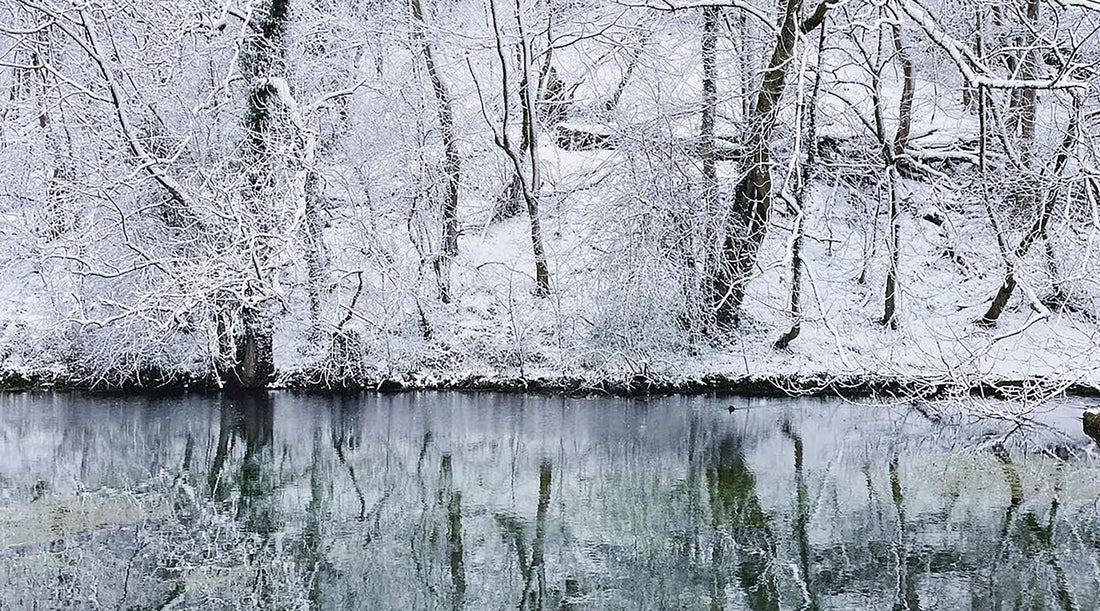I’ve been thinking a lot about seasonality recently, and in particular, what exactly I refer to as being ‘seasonal’. It’s the word I use to describe my photographs because they depict flowers that are blooming together on any given day of the year. The focus is always on garden plants, often with a few pickings from nature… a leaf or branch here, a catkin there.

So much of my gardening practice has been about extending the seasons, by which I mean, selecting species that will provide us with flowers early and late in the year, often using a controlled environment such as a cool glasshouse or poly-tunnel. On the one hand, these plants are seasonal, a far cry from flowers imported from overseas, but on the other hand, they are not.
In the countryside where I walk daily, even at this point in the year, the only flowers I come across are snowdrops. The hazel catkins are turning brown and ivy berries becoming ever-more plump. There are crocuses too, but I believe these to be garden-escapees, along with odd clumps of daffodils still in bud. I did however see my first celandine of the year yesterday, revealed through snow melt. We had 12 inches of snow fall this past weekend in Derbyshire. Truly, March can be a month of extreme contrasts.
The remnants of last year’s plant growth are now at their most fragile. Old seed-heads and rose-hips are disintegrating, becoming intangible from the soil and earth itself. Their role now is to offer nourishment to new life pushing up from the woodland floor. Looking down, I can see the foliage of cow parsley, willow herb, celandines and violas coming through and I’m excited to see these clues of flowers to come. Birdlife is now far more active and noisier than this time last month. There is a new energy rising and a quickening in growth, though still very few flowers.
 Gardens can tell a very different story of seasonality at this time of year, with hellebores, cyclamen, dwarf iris, forsythia, cherry plum, and the newly blooming daffodils. If we bring glasshouses and poly-tunnels into the mix, there’s even more scope for flowery abundance in March. The camellias and Icelandic poppies in the picture above were both grown in glasshouses, and they feel luxurious and extravagant when compared with the scene outdoors. They’re all the more enjoyable and enlivening for the contrast.
Gardens can tell a very different story of seasonality at this time of year, with hellebores, cyclamen, dwarf iris, forsythia, cherry plum, and the newly blooming daffodils. If we bring glasshouses and poly-tunnels into the mix, there’s even more scope for flowery abundance in March. The camellias and Icelandic poppies in the picture above were both grown in glasshouses, and they feel luxurious and extravagant when compared with the scene outdoors. They’re all the more enjoyable and enlivening for the contrast.
The single fritillaria raddeana in the top left of the image is a species I have come to love. It reliably flowers outside in March. Although it has its origins in rocky areas of Iran, Kashmir and Turkmenistan, it flowers perfectly well in Derbyshire at this time of year, and therefore earns the label of being seasonal. I like to plant their bulbs in small terracotta pots in the autumn, so I can keep them on a table and appreciate the flowers close up, as they don’t grow particularly tall.
When collecting the flowers for the photograph (above), I was fortunate enough to have access to a magnificent stachyurus praecox to cut from. These wonderful shrubs, which are curiously rare in gardens, have exquisite bell-shaped flowers, pale yellow and very small, which hang down in racemes (a little like catkins). They’re also robust and not badly damaged by late frosts, which makes them such a treat at the end of winter.
Perhaps though, it’s when we see the first daffodils and our native primula vulgaris that we make the mental switch from winter to spring. In the flower photographs, both above and below, I’ve chosen daffodils of the palest yellow and white. Those in the print below, along with the soft pink scilla and muscari add lightness to the darker tones in the fritillaries. The fritillaries in this photograph include (from left to right): Fritillaria persica, meleagris and elwesii.

The F. persica here, which has a spire of dark maroon bells, was treated with great care when cut for this photograph, as it’s notoriously tricky to grow. Often it’ll show great promise by sending up healthy glaucous foliage, only to disappoint when the flower buds fail to develop. If I was the type of gardener inclined to become obsessed with one genus in particular, Fritillaria would most definitely be my genus of choice. Along with hellebores perhaps.
This photograph above was taken in early spring when I was living in Washington state in North America. The very first dandelions had appeared and just gone to seed. I included one in this composition to mark that early moment in the season, when the joy of new growth is juxtaposed with a rapidly increasing number of tasks for the gardener and cut flower grower. The new season is underway.
Thank you for being here,
Becky x

